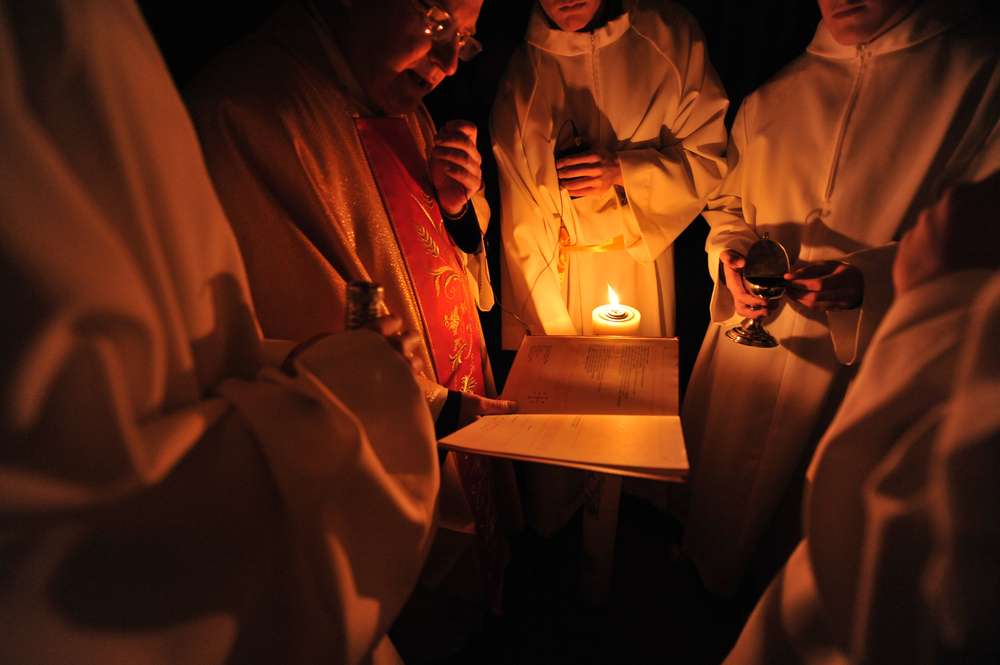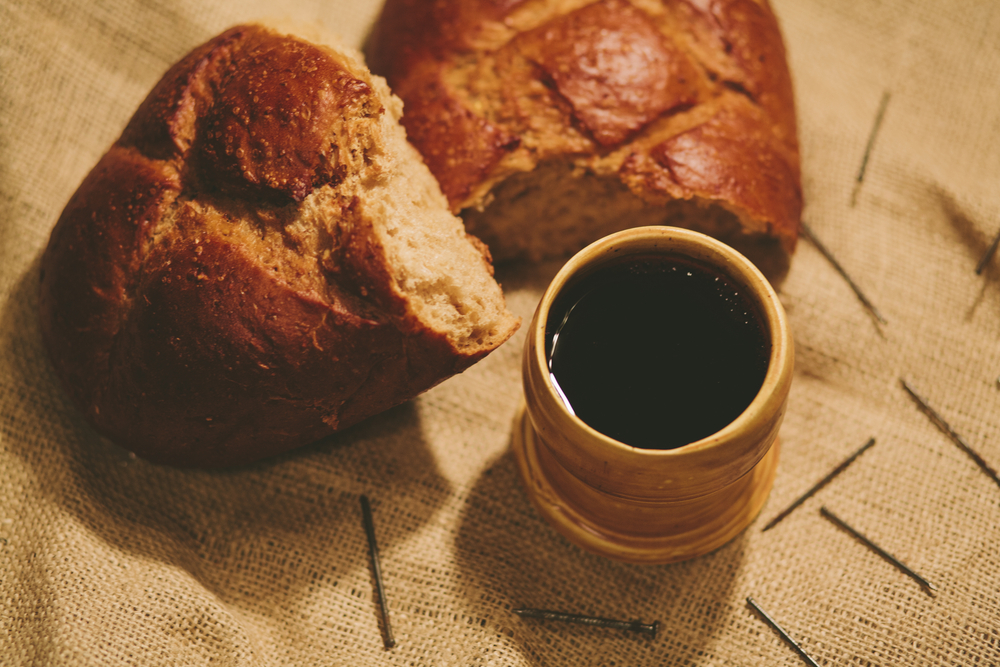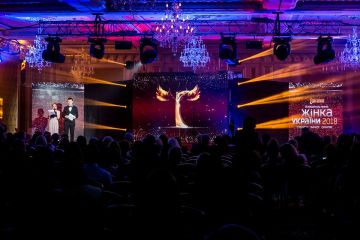In Ukraine, Easter is a family holiday, that’s why outdoor celebrations aren’t as spread. Traditionally, the whole family gathers on Easter for the great feast. Younger and older members engage in an “egg battle” — two people choose eggs and then crash them. The one with egg without cracks is declared a winner, and is believed to have great luck throughout the year. Now, let’s see the peculiarities of celebrations within Orthodox and Catholic Easter, that are both celebrated in Ukraine.
Orthodox Easter 
To start with, it is necessary to remind of the Orthodox Easter date tradition — choice of the day depends on the vernal equinox. Traditionally, Orthodox Easter is celebrated on the first Sunday after the new moon following the vernal equinox — and in 2018 Ukraine will enjoy festiveness on April 8. Moreover, April 7, 8 and 9 are official governmental holidays, which means more opportunities to rest travel. While most companies allow their employees to take the official 3 days off, some follow the regular schedule, so it’s necessary to contact the office before making reservations. The preparation for Easter celebrations starts long before spring graces the land — in fact, the most important part of the holiday is the Great Lent, which lasts for 7 weeks for Orthodox Christians. The number symbolizes the time Jesus Christ has spent in the scorching heat of the desert.
Read: Kyiv Most Beautiful Temples
Orthodox churches hold special rituals during service before Easter. For instance, bringing out the Epitaphios — embroidered cloth with the picture of Jesus marks the church service on Good Friday. The Epitaphios is taken out of the altar at 3 P.M. and is set in the centre of the temple on a raised platform, decorated with flowers and smeared with incense. The second service takes place in the evening: believers listen to the singing with candles in their hands, and the Epitaphios is carried in procession around the outside of the church. After the all-night Saturday service, Orthodox Christians in Ukraine hurry for the consecration. Priests sanctify traditional baskets, filled with Easter cake Paska, decorated eggs pysankas, wine and other products. The basket is typically decorated with flowers and rushnyky — traditional Ukrainian towels.
Catholic Easter 
For Catholic believers in Ukraine, Easter in 2018 is celebrated on April 1. Just like in case with Orthodox Christians, the Great Lent that lasts 40 days precedes the great holiday. According to Catholic beliefs, the meaning of the Lent is to purify the soul and be thankful to Christ who gave his life for all humans living on Earth. Usually, devoted Christians incorporate Lent diet: no products of animal origin, no alcohol, and no sweets. For those who aren’t as strict with following traditional rules, Lent means abstaining from beloved meals, products or activities to recognize Christ’s hardships.
For Catholics, the celebration of Easter begins on Good Sunday — from late evening to sunrise, Easter Vigil is held in all Catholic churches to celebrate the Resurrection of Jesus. A special Easter candle, or Paschal candle, is blessed and lit before the beginning of the service. On Sunday, Catholics visit churches, where priests sanctify the baptismal water, and believers lit their candles from the Easter candle. Painted eggs are the main symbol of the holiday for Catholics and Orthodox both. Eggs are sanctified in churches and given to all guests who visit families on Easter. The main festive dishes are usually a rabbit, turkey or chicken.
Peculiarities of the holiday
During the last days of the Great Lent, hostesses and heads of the family start what internationally may be called the great spring cleaning — in mere days, the whole house shines bright like a diamond. Maundy Thursday is dedicated to commemorating Last Supper of Jesus Christ, and has a curious tradition in Ukraine: according to the folk beliefs, bathing before sunrise has ritualistic meaning, which cleans both the body and the soul. Water in this day is believed to have purifying qualities. All cleaning and fixing around the house should be finished by the end of Thursday.
The following day, Good Friday, is commemoration of crucifixion of Jesus Christ. In 2018 it is marked on April 6, and is the most strict day of the Great Lent — devoted Christians abstain from food, allowing only bread and glass of water in the evening. No entertainment, as well as cleaning or fixing clothes and appearance are allowed on this day. Bringing out the Epitaphios with the picture of Jesus marks the church service on Good Friday. The Epitaphios is taken out of the altar at 3 P.M. and is set in the center of the temple on a raised platform decorated with flowers and smeared with incense. The second service takes place in the evening: believers listen to the singing with candles in their hands, and the Epitaphios is carried in procession around the outside of the church.
Read: Most Beautiful Lviv Temples
Holy Saturday is the last day before Easter is the ‘quiet’ day, filled with baking Paska — traditional round Easter bread, and making pysanka — egg, decorated with traditional motifs. Egg symbolizes the eternity of life, rebirth and immortality, while Paska is a symbol of the body of the Lord, his human and divine essence. Many Ukrainians go to the all-night service, held in every church. At midnight of Sunday, churches begin the festive procession with loud bell ringing and hymns. The priest addresses the believers with Hrystos Voskres (“Christ is risen”), to which they reply Voistynu Voskres (“Truly He is risen”). This is a traditional greeting for Easter in Ukraine — people greet each other with these words during the day. After the service ends, priests begin consecration of traditional basket, filled with Paska, pysankas, wine and other products, decorated with flowers and rushnyky — traditional Ukrainian towels.
Traditional attributes and events
Without doubt, Ukrainian Easter isn’t complete without two main attributes — Paska and pysanka. In the older times, hosts and hostesses used to bake Paska in their house. The tradition still stays strong in most villages where religious holidays carry exceptional value, and some modern families use recipes passed from generation to generation. Usually around a couple of days before Easter, Paska appears in all shops and bakeries of the country in all sizes and variations. It is considered a custom to bring Paska when going to visit relatives or friends, and even give one to colleagues at work or neighbors. Usually, families buy from 4 to 10 Paska of different sizes, leaving the biggest for the festive table. The top of the Easter bread is usually decorated with sugar glazing and sweet topping, and inside Paska has plenty of raisins.
Read: Best Ukrainian Traditional Food
The tradition of pysanka goes centuries back in history and lives strong up to date. In fact, pysanka is an umbrella term for more than 10 types of eggs, decorated in different ways. Traditional motifs differ from region to region, and each part of Ukraine prides in having unique décor and color palette. Locals and tourists have an opportunity to look at those in detail in 2018 — from April 5 to April 22, Sofiiska Square will host a giant Pysanka fest, where human-sized eggs will be placed in the open air. Previous fests counted as many as 858 eggs, which is truly impressive.
Traveling opportunities
Finally, Easter is a good opportunity to travel for those who aren’t engaged in religious festiveness. Ukrzalisnytsia announced additional trains to the most popular tourist spots in Ukraine:
№ 191/192 Kyiv — Lviv on April 6, 7 and 9;
№ 243/244 Kyiv — Lviv on April 7 and 10;
№ 197/198 Kyiv — Kovel on April 7 and 9;
№ 787/788 Kharkiv — Kostiantynivka on April 9.
Detailed schedule of trains including departure and arrival time is available at Ukrzalisnytsia website, where you can also purchase tickets online.
Have a great holiday!
Photo source: shutterstock.com. All images belong to their rightful authors.
Easter 2018 in Ukraine
April marks one of the most important holidays for Christians all over the world, and Ukraine isn’t an exception of celebrating Easter with great measure of festiveness. The holiday usually brings over long-awaited spring weather, which is especially longed for in 2018, as well as the end of Great Lent, which means various delicious dishes. Let’s see how Ukraine will celebrate Easter in 2018.







